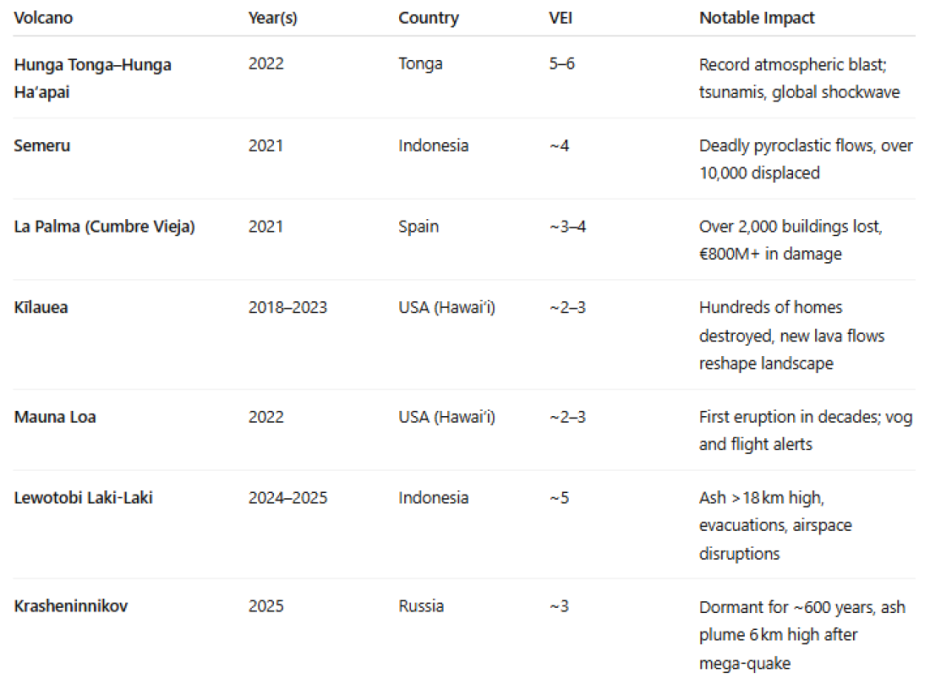Why the GBC meeting is significant to Thailand-Cambodia de-escalation
Military representatives from Cambodia and Thailand met in Chanthaburi province on Wednesday ahead of formal ceasefire talks at the 3rd special GBC me...
Volcanoes can ground planes, bury towns, and reshape landscapes in hours. With over 850 eruptions since 2015, Earth is constantly reminding us of its raw power, but why does it erupt, and what can we expect next?
What causes an eruption?
Volcanoes act as channels allowing magma (molten rock) to reach Earth’s surface. As magma rises, dissolved gases expand, increasing pressure until the rock breaks. Whether an eruption gently flows or explosively bursts depends on magma viscosity and gas content.
“Volcanic eruptions are really about pressure release. Gas wants to escape, and the magma is its vehicle,” — Dr. Jessica Johnson, volcanologist.
“It’s like shaking a soda bottle and releasing the cap too fast—it blows,” — Dr. Janine Krippner, Smithsonian volcanologist.
Where and how they form?
Most eruptions occur at tectonic plate boundaries, especially subduction zones like the Ring of Fire, or at hotspots such as the Hawaiian Islands. Volcanoes also form along ocean ridges beneath the sea.
Volcanoes types:
“Supervolcanoes like Yellowstone can erupt over 1,000 km³ of material,” said Professor Ray Cas, Monash University.
Major eruptions (2015–2025)
Recorded global eruptions totaled roughly 850+, from minor flows to devastating explosions. Here are the most significant:

Earthquake-triggered volcanism in Russia
Why it matters
Quick facts
850+ eruptions (2015–2025), but only one VEI 5–6 event (Tonga)
Average of 40–50 eruptions daily
Earthquakes can trigger nearby volcanoes if conditions are primed
Indonesia and Kamchatka were hotspots of outbreak activity
Avalanche, ash inhalation, toxic gas, and climate cooling are key impacts
Final word
Volcanoes are critical to understanding Earth’s dynamism, but they are also unpredictable. The 2025 Kamchatka earthquake and subsequent eruption at Krasheninnikov illustrate just how connected the planet’s tectonic systems truly are.
“With seismic activity, you can’t say volcanoes follow a schedule—but you can see the strings connecting them,”
— Dr. Ed Venzke, Smithsonian Institution Global Volcanism Program.
Vince Zampella, co-creator of the Call of Duty gaming franchise, has died in a car crash involving a Ferrari crash on Monday in Los Angeles, United States.
Israeli Prime Minister Benjamin Netanyahu said Israel is monitoring recent Iranian military exercises and will raise the issue with U.S. President Donald Trump during his visit to Washington next week.
Paramount has reaffirmed its bid to acquire Warner Bros. Discovery, offering $30 per share in cash and backing the proposal with a $40.4 billion personal equity guarantee from billionaire Larry Ellison, despite the target company’s board urging shareholders to reject the offer.
U.S. President Donald Trump has approved plans to construct a new class of battleships, which he described as larger, faster and significantly more powerful than any previous U.S. warship.
As the European Commission warns of possible visa suspension, Georgian authorities reject accusations of democratic backsliding. What is really at stake — and who could be affected most?
Dense smog has forced authorities in Pakistan’s Punjab province to shut several major motorways on Tuesday (16 December), stranding commuters as visibility dropped sharply and Lahore’s air quality reached hazardous levels.
At least 37 people have been killed in flash floods triggered by torrential rain in Morocco's Atlantic coastal province of Safi, Moroccan authorities said on Monday (15 December).
Climatologists say Poland has logged its warmest December in 74 years, with 2025 continuing a run of above-average temperatures and repeated national records.
As the world marks the tenth anniversary of the Paris Agreement, progress in combating global climate change is mixed.
An extratropical cyclone has caused widespread disruption across Brazil’s São Paulo state, with powerful winds toppling trees and power lines, blocking streets and leaving large parts of the region without electricity.
You can download the AnewZ application from Play Store and the App Store.

What is your opinion on this topic?
Leave the first comment